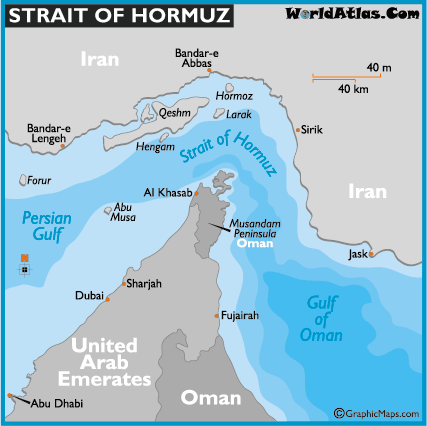Will wrote:One question that has come up in my mind while reading a bit about the debate between local and global Biblical floods is this:
If the flood was local, and impacted only the Mesopotamian region, why did the water stay for 150 days? After the initial deluge, would not the water have drained off the land into the Persian Gulf?
Will
A lot of it would have to do with the size of the opening at the strait of Hormuz (at the beginning of the Persian gulf). If the opening was smaller, the drain would have been slower.

You can also find more about the different theories and other possible locations here.
Location of Noah's Local Flood
Hugh Ross also puts an interesting spin on it for the Mesopotamian area..
Sidebar: Water-level Math (by Hugh Ross)
The Genesis text does not specify the exact depth of the floodwaters. It states only that the ark floated up on the waters and that the nearby hills were so inundated that from Noah's perspective the whole face of Earth was covered with water. That is, from one horizon to the other, all Noah could see was water.
An ark 450 feet long by 75 feet wide by 45 feet high, loaded with animals and supplies, probably needed a draft of at least 20 feet. If Noah stood on top of the ark, his eye level would have been approximately 30 feet above the waters (refraction corrections included). The water level horizon for him would have been about 8 miles away. Any hill more distant than about 15 miles, sticking up even a hundred feet or more above the water, would have been invisible. Hills higher than 500 feet and 1,000 feet above water level would have been beyond the possible view of Noah if they were more than 28 and 38 miles distant, respectively.
Are there any regions in Mesopotamia where, if the Tigris and/or Euphrates Rivers overflowed their banks by a depth of 20 feet or so, water would extend to 28 or 38 miles on either side? Yes. Such regions exist in both southern and middle Mesopotamia. It would be difficult, though not impossible, to imagine how so little water could wipe out all humans and all the birds and mammals associated with them. Fifty feet, a hundred feet, or a few hundred feet depth of water would provide a more realistic scenario.
The rate at which a 50-foot, 100-foot, or higher surge of water above the banks of the Tigris and Euphrates rivers would flow out to the Persian Gulf depends upon the slope of the land. From 400 miles northwest of Ur to Ur (the location of the Persian shore at the time of Noah), the Euphrates and Tigris rivers drop just 300 feet in elevation. This drop provides a grade of only about 0.01 percent. With that gentle a slope, the Flood waters would have moved very slowly out to the Persian Gulf. Moreover, for several months after the rain stopped, any water that exited to the Gulf would have been replaced with runoff from springs and melting snow on the distant mountains that surround the Mesopotamian Plain.
Genesis 8:1 states that God removed the floodwaters by sending a wind. Given the gentle slope of the land, evaporation plays a more significant role than gravity in removing the water. Such a scenario is consistent with the worst floods that have struck the Mississippi Valley, for example. The water rose 50 feet above the banks in those Mississippi floods and then it seemed to stand still.1 Residents of the region noticed little discernable movement. They had to wait for the waters to dry up.
Just how effective is evaporation for removing flood waters? During a typical Southern California summer the swimming pools lose an average of one inch of water per day to evaporation. Lower humidity, higher heat, and a strong wind can triple or quadruple that rate. Over the 335 days during which Noah's Flood receded, that would add up to 84-112 feet of evaporation. If gravity had removed about half that much water, the total water depth removed would have been 126-168 feet. That is easily enough water to account for Noah's seeing nothing but water for as far as his eyes could see. That is easily enough water to destroy all of Noah's contemporaries and their animals outside the ark. And, that is easily enough water to carry the ark to the foothills of Ararat.
Source:
http://www.reasons.org/resources/fff/20 ... oahs_flood
